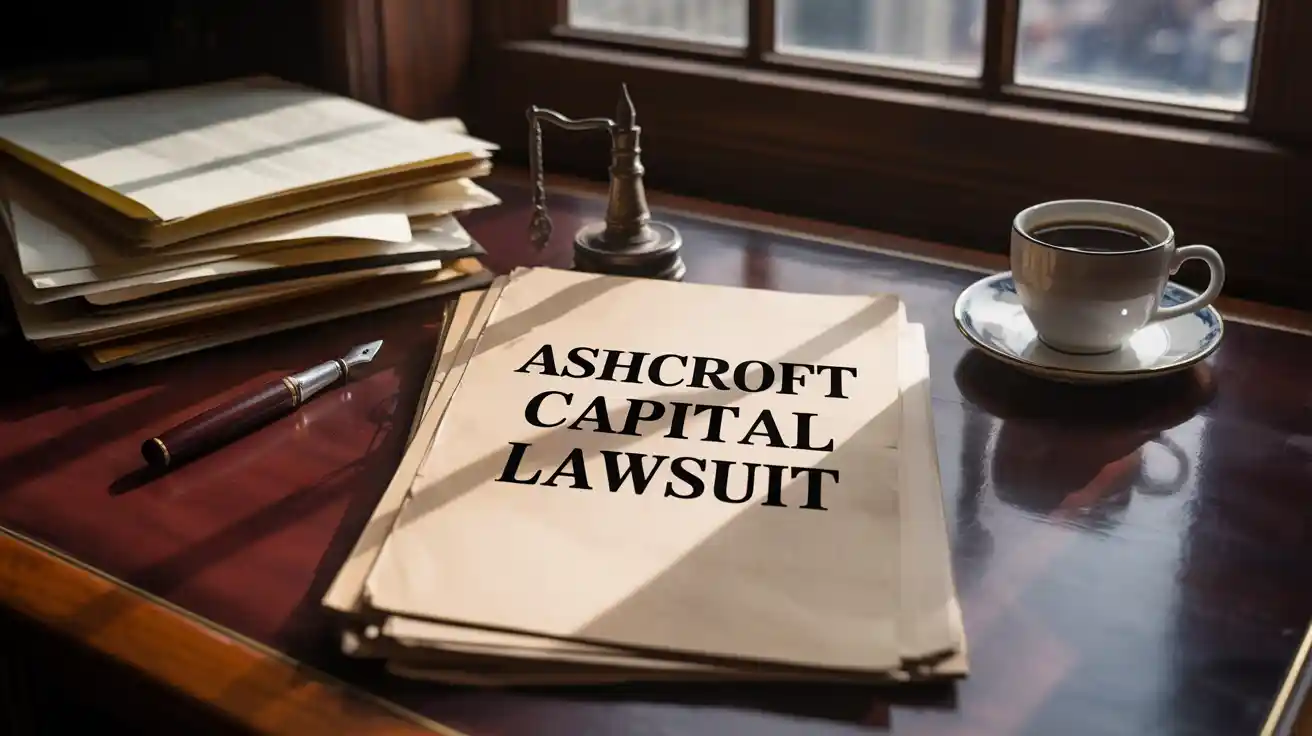In February–March 2025, a lawsuit brought by accredited investors sent shockwaves through the real estate syndication world. The court case—filed under the name Cautero v. Ashcroft Legacy Funds, LLC, et al. in New Jersey federal court—accuses ashcroft capital lawsuit, a major multifamily investment firm, of overstating returns, withholding risk disclosures, breaching fiduciary duties, and misusing funds. With over $18 million in claimed damages, the lawsuit has sparked debate among investors and industry observers about transparency, accountability, and the future landscape of passive real estate investing This article breaks down the lawsuit in depth—examining the allegations, timeline, legal principles involved, Ashcroft’s defense, investor reactions, regulatory implications, possible outcomes, and what this means for the larger industry.
1. Background: Who Is Ashcroft Capital?
Ashcroft Capital is a vertically integrated real estate syndicator specializing in value-add multifamily properties across U.S. growth markets. Established in 2015 by seasoned professionals like Frank Roessler and Joe Fairless, the company takes pride in its in-house asset management, hands-on property repair, and exposure to passive investors through syndications Though Ashcroft has built a reputation for delivering strong investor returns and operational transparency, the investment landscape shifted markedly in 2022–2023 due to rising interest rates and tightening credit, exposing weaknesses in the sector—a backdrop that would be central to the emerging lawsuit.
2. Overview of the Lawsuit
Timeline & Filing
- February 12, 2025: Plaintiffs file Cautero v. Ashcroft Legacy Funds in New Jersey’s federal court, citing alleged financial harm from reliance on inflated Internal Rate of Return (IRR) projections and inadequate disclosure.
- March 2025: Additional filings clarify that 12 accredited investors are represented, claiming around $18 million in ill-gotten equity and returns.
Who Are the Plaintiffs?
The group includes both existing and former investors across multiple Ashcroft-held syndications. These parties allege that they invested based on overly rosy forecasts and were not adequately informed of underperformance or risks.
Core Allegations
- Overstated IRRs: Plaintiffs allege the firm consistently overstated projected IRRs by 4–6 percentage points.
- Opaque Risk Disclosures: They claim Ashcroft concealed emerging challenges—such as financing delays, high interest rates, and operating cost spikes—until after capital was already deployed.
- Breach of Fiduciary Duty and Misuse of Funds: LPs allege that management pulled fees even while key metrics lagged and diverted capital to non-material expenses without timely notification or consent.
3. The Syndication Model & Where It Falters
How Syndications Work
Real estate syndications involve:
- Ashcroft Capital, a General Partner (GP), is in charge of planning, acquiring, and managing the asset.
- Limited Partners (LPs)—passive investors providing equity, with anticipated returns based on the GP’s projections.
GPs typically earn acquisition fees, ongoing asset management fees, and a share of profits above a preferred return.
Risks Inherent to Syndications
Key vulnerabilities include:
- Pro forma optimism: Estimates are just that—unless accompanied by conservative risk buffers, they often fail during market downturns.
- Asymmetric information: LPs rely on GPs for updates. Delayed or spun reporting undermines investor trust.
- Fee timing: Fees are typically taken up front, making misalignment particularly harmful during underperformance.
In Ashcroft’s case, plaintiffs assert that the firm took these fees despite persistent underperformance and delayed disclosure of red flags.
4. Legal Framework: Fiduciary Breach & Securities Violations
Breach of Fiduciary Duty
GPs owe fiduciary duties to LPs when they assume control and have discretionary authority over property operations. The lawsuit argues Ashcroft improperly acted to gain fees without fully informing investors of project deterioration.
Securities Law Considerations (Howey Test)
Although private syndications are not public securities, they can be deemed “investment contracts” per the 1946 Howey decision. If the court finds Ashcroft’s offerings to be securities, future liability could expand under SEC and federal securities laws
5. Ashcroft Capital’s Defense
Market Volatility Defense
All investments involve risk, Ashcroft argues, pointing out that real estate faced previously unheard-of challenges beginning in 2022. They assert that disclosures—via private placement memoranda (PPMs)—included these risk factors, and any underperformance was due to systemic market forces
Emphasis on Transparency & Compliance
The firm maintains it consistently complied with SEC regulations, held regular investor webinars, and issued monthly financial summaries—arguing they fulfilled obligations in good faith
Track Record & Investor Returns
Ashcroft points to prior successful deals and historical returns that netted investors “outsized” returns. In their view, this poor performance cycle does not mask intentional deception, merely market realities
6. Timeline & Developments
Key Events Through July 2025
- Feb–Mar: Lawsuit filed; investor forum chatter begins
- Apr–May: Motions, discovery requests, media coverage emerge; investor forums reflect rising distrust
- July: Court orders internal document production (July 3); affidavit from ex-employee surfaces (July 15); Ashcroft moves to add co-defendant (July 22); mediation rumors swirl
Public and Investor Reactions
Investor communities like Reddit and social platforms have echoed wariness:
“I invested in three of their funds. One has performed well, one is flat, and one is in trouble… I mind being kept in the dark.
New platforms—from Bloomberg to syndication blogs—are now scrutinizing Ashcroft and placing greater emphasis on risk education
7. Broader Industry Implications
Compliance & Due Diligence Overhaul
Experts predict syndicators will:
- Enhance disclosures,
- Strengthen alignment within fee structures,
- Introduce more investor protections, including external audits
LPs Become More Vigilant
Passive investors are now demanding:
Potential Regulatory Ripple Effects
The SEC may use this case to revisit accommodating private real estate placement regulations. A finding of securities status could push heightened registration/disclosure standards across the sector
Lessons for Investors
- Demand Clarity: Understand how IRR and other projections were developed. Ask for sensitivity/risk scenarios.
- Audit Rights: Seek syndicators who allow independent reviews or audits of financial material.
- Continuous Monitoring: Demand monthly reports on capital calls, NOI, occupancy, etc.
- Alignment of Fees & Performance: Favor structures where sponsors are incentivized long-term.
- Diversification: Don’t allocate heavily to single sponsor or market—spread across operators, asset types, and cycles
Conclusion
The Ashcroft Capital lawsuit underscores the pressing need for deeper investor scrutiny in private real estate offerings. At stake are not just the holdings of a handful of LPs, but also the integrity and future of syndication as a passive investment structure.
As the judicial process unfolds—with document disclosures, motions, affidavits, and possible mediation—lighter syndicators will undoubtedly adopt stricter communication and compliance frameworks. LPs must heed this moment: insist on clarity before signing, demand updates throughout, and never assume best intentions are enough.
Real estate investing can be lucrative—but this case reminds us: it’s the same playbook that brings growth that can also invite lawsuits when expectations—and disclosures—don’t match reality. The lawsuits may settle or go to trial; either way, the watchword for investors must be informed vigilance.
Read More About Law At Digital Reserved

















